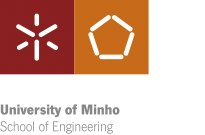Recognised as a hub of the National Network of Ciência Viva centres, the science centre “Centro Ciência Viva de Guimarães (CCVG)” promotes scientific and technological culture, particularly through educational activities. The centre aims at motivating the public towards scientific learning, through promoting contact with scientific knowledge, its agents and processes from an early stage.
On the 17th December, “Curtir Ciência”, so-called as a reference to the tanning (“curtume”) activity once held at this location, the old tannery “Âncora”, celebrated its 2nd anniversary. The anniversary celebrations were attended by Rosalia Vargas, President of Ciência Viva – National Agency for Scientific and Technological Culture, Rui Vieira de Castro, Rector of the UMinho, Adelina Paula Pinto, Vice-President of Guimarães Municipality, and Sérgio Silva, Executive Director of Curtir Ciência.
The building’s rehabilitation, carried out by Guimarães Municipality, joined by UMinho’s scientific support, resulted in an interactive space for scientific and technological dissemination which acts as a knowledge platform. “The centre was initially planned with a scientific community involving several of EEUM’s professors. Most of the interactive modules were designed by these researchers. Consequently, our exhibition is closely related to new technologies associated to knowledge areas focused by the EEUM”, Sérgio Silva, the Executive Director of CCVG, highlights.
“In the past two years, CCVG’s activity has been very positive, summing up more than 32 thousand visitors already. The CCVG is one of the most visited science centres in the country”, Sérgio Silva refers. Apart from the permanent exhibition, the centre also carries out several initiatives such as workshops and experimental activities aimed at different audiences and age groups. “The visitors’ feedback has been excellent”, he adds.
The permanent exhibition is composed of 17 interactive modules related to several knowledge areas - Electronics and Instrumentation, Robotics, Recycling, History and Communications. “We expect to change one of the modules every couple of years, either improving it or replacing existing projects, in order to keep technology updated”, the director explains.
Particularly, as far as the collaboration with the School of Engineering is concerned, Sérgio Silva believes “it is crucial, not only in developing and improving our interactive modules, but also considering posing new challenges to students. We would like to have students developing their master dissertations at the centre, for instance”.
The CCVG’s Scientific Committee is composed of 4 professors of the EEUM, Luís Ramos (DEC), Pedro Souto (DET), João Sena Esteves (DEI) and João Miguel Nóbrega (DEP), and also by João Nuno Oliveira, executive director of the Centre for Computer Graphics (CCG), UMinho’s interface unit.
On the 19th December, the Dean and staff of the EEUM’s Presidency visited CCVG’s facilities. The visit aimed at getting to know the centre’s activities and boosting the creation of new collaboration opportunities between the centre and the School’s academic community.

